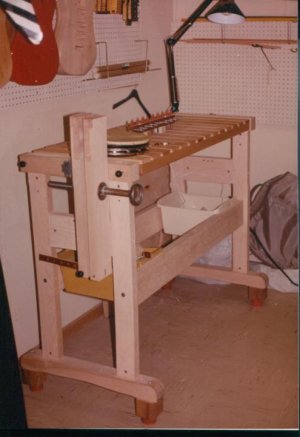I am presented with a neck that needs a little more accuracy than a flat level. Under tension, the relief is not as expected.
I've been watching the Erlewine vids, and it seems the primary value of it is being able to simulate string tension. All the other stuff is just bells and whistles. It has the gauges underneath the neck, but afaict, those are superfluous.
All you need is a way to simulate string tension and a straight edge to verify that the tension you've applied is making the neck straight. Those little dial gauges look cool, but the whole thing looks overbuilt.
All you need is a way to simulate string tension (a strap over headstock, and a straight edge to verify that the forces you are applying are doing the same thing as the strings would.
Opinions?
I've been watching the Erlewine vids, and it seems the primary value of it is being able to simulate string tension. All the other stuff is just bells and whistles. It has the gauges underneath the neck, but afaict, those are superfluous.
All you need is a way to simulate string tension and a straight edge to verify that the tension you've applied is making the neck straight. Those little dial gauges look cool, but the whole thing looks overbuilt.
All you need is a way to simulate string tension (a strap over headstock, and a straight edge to verify that the forces you are applying are doing the same thing as the strings would.
Opinions?

